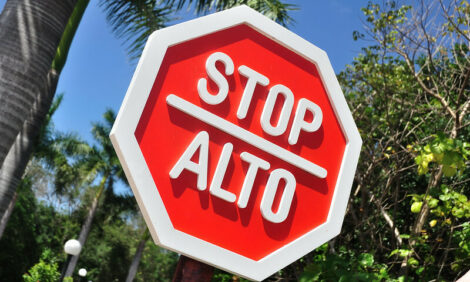



MLA: Weekly Cattle Summary
AUSTRALIA - This report is a collection of weekly cattle price summaries from each Australian territory by Meat & Livestock Australia (MLA).
South Australia
Improved prices, larger yardings
Improved prices last week saw more 1 and 2 score stock yarded from a wide range of regions in the hope of receiving good prices, however most sales tended to retreat with some lots being passed in.
The SA LE’s similar numbered yarding contained mixed quality runs of young cattle and cows that sold to an erratic trend being provided by the usual trade and export buyers.
Limited numbers of vealers were penned with the steers, feeders and the C3 mainly light heifers going to the trade. Feeder orders sourced most light and medium weight yearling steers at fluctuating prices, with trade purchases of C3 medium and heavyweights dearer.
Yearling heifer C3 sales were dearer for the medium weights and unchanged for the heavy heifers. Cow prices were cheaper as all sales fell below 103¢/kg.
Naracoorte’s increased numbers, in very mixed quality runs from a wide range of regions, sold to a fluctuating priced sale to most of the usual SA and Victorian trade and export buyers. Apart from isolated sales that were unchanged to slightly dearer, most others lost ground as numbers outweighed supply.
Mt. Gambier’s larger yarding also featured mixed quality runs that sold to most of the usual buyers, with some sales dearer where quality suited, while others where quality slipped and numbers outweighed supply. Millicent’s similar numbered yarding for its fortnightly sale featured mainly young cattle.
Increased numbers, lower prices
The increased numbers of cattle yarded this week in mixed quality runs led to most categories attracting lower prices, with only isolated sales being dearer.
The B-muscled vealers over a wide range of weights sold from 160¢ to 205¢, with the lightweights 7¢/kg dearer and the heavyweights basically unchanged. Feeder and restocker orders sourced C1 and C2 light and medium weight steers from 134¢ to 177¢ or 2¢ to 10¢/kg less. Vealer heifers sold erratically again as most attracted prices from 125¢ to 192¢ that left most sales 3¢ to 10¢ less and only isolated sales 1¢ to 4¢/kg dearer.
Yearling C3 medium and heavyweights sold from 140¢ to 185¢, being unchanged to 5¢/kg dearer. Increased numbers sourced by feeder and restockers sold from 126¢ to 177¢/kg. Yearling heifer C3 sales were between 129¢ and 175¢/kg, being basically unchanged.
Grown steer C3 and C4 medium and heavyweights sold from 145¢ to 183¢ and mainly 1¢ to 6¢/kg dearer, or 275¢ to 320¢/kg cwt. The 3 to 5 score beef cows sold from 95¢ to 125¢ to be 3¢ to 13¢/kg cheaper, and mainly 175¢ to 235¢/kg cwt. The D1 and D2 sales to restockers ranged from 60¢ to 90¢/kg.
New South Wales
Supply lifts across most of the state
Continuing dry conditions across the southern and western regions of the state caused numbers to lift at most MLA NLRS reported saleyards. Dubbo was the exception as numbers failed to reach the highs recorded at the previous market, although consignments were still large. Wagga lifted around 12% as Gunnedah increased 10% with the northern Casino sale gaining around 5% week on week. Forbes selling complex remained similar as the CTLX complex lifted 18% compared to the previous market. Inverell and Armidale markets both produced fair yardings.
Plainer younger cattle continue to dominate supply
As large consignments of western cattle continue to enter the market quality at most sales remain on the plainer side with less of the popular breeds sourced. Vealers continue to dominate the northern markets, however the majority failed to reach the heavy weight categories.
The southern and central tablelands sales together with the Forbes and New England selling complexes all report pens of quality younger steers and heifers suitable for restocker and lot feeder competition as the Hunter region are still yarding prime conditioned lines suitable for the butchers. Due to the dryer conditions restocker competition slipped marginally as most reported lot feeder enquiry quiet solid especially regarding the popular breeds.
Prices overall eased marginally
Most markets reported younger cattle at firm to slightly cheaper prices with the plainer quality contributing in places. The best of the prime conditioned vealers to the butchers topped at 234¢ as the lighter weighted steers to the restockers averaged 194¢/kg.
Yearlings sold to a mixed trend as the better bred drafts to restockers reached into the early 200¢/kg range before averaging 177¢/kg. Yearling heifers struggled in the competition mostly selling at reduced prices.
Steers and bullocks sold close to firm as some markets reported an increase in age as the younger milk and 2 tooths reached 187.6¢/kg. Cows struggled to remain firm week on week as the majority of the selling complexes reported fair to good cow numbers with the best muscled pens reaching 155¢ before settling around the 122¢/kg range.
Victoria
Numbers lift
The lack of precipitation across the state continues to influence producers to offload stock, as total throughput lifted by 23% as reported by MLA’s National Livestock Reporting Service. The majority of selling centres yarded more cattle with the largest increases reported at Pakenham, up 30%, while Warrnambool and Leongatha both lifted there supply 26% week-on-week.
Consignments at Ballarat more than doubled on last week, while Wodonga’s throughput lifted by 23% with a good selection of quality bullocks offered, with yearlings also in greater numbers. Camperdown and Colac were relatively unchanged on last week’s levels.
Plain cattle continue to flow
Secondary lines of supplementary fed cattle continue to flow in large numbers across most markets from the western and northern regions, predominately due to the continual dry weather.
There was a sprinkling of finished lines through all markets attracting higher prices; however unfinished lines were well discounted. The majority of buyers were competing across all markets however there was limited restocker interest at Warrnambool, Bairnsdale and Colac.
Prices ease
Prices generally slipped across most categories mainly due to quality and hesitation from buyers. Heavy vealer steers to slaughter averaged 183¢, up 3¢, while the heifer equivalents generally sold from 140¢ to 222¢/kg.
Light yearling steers to restock ranged from 134¢ to 173¢ for the better quality lines while heavy weights to processor orders averaged from 171¢ to 180¢/kg. Heavy yearling steers to slaughter averaged 5¢ less making 163¢ while D3 lines sold from 115¢ to 166¢/kg. The majority of the heavy grown steers to slaughter averaged around 174¢, while bullocks ranged in price from 138¢ to 184¢/kg.
The better quality light grown heifers averaged 146¢, while D3 lines made 136¢/kg. Medium D2 dairy cows averaged 89¢, back 7¢, while heavy D1 cows made 101¢/kg. Heavy D3 beef cows sold from 90¢ to 130¢/kg.
Western Australia
Dry conditions prevail
Thunderstorm activity continued throughout much of the northern pastoral regions, but seasonal conditions still remain only average. Conditions in much of WA remained extremely hot with this exacerbated by higher humidity levels this week.
In the southern agricultural districts of the state dry conditions remain despite thunderstorms across a wide area. Feed conditions in the south continue to dwindle as would be expected at this time of year with many areas now beginning supplementary feeding, particularly those that have begun early calving.
The bull selling season is now well under way with reasonable demand and price levels reported thus far.
Solid physical market numbers
There were larger supplies of cattle at Mt Barker and Boyanup this week, while Muchea’s total fell marginally on the previous week with the overall combined weekly total rising. As has been the case since the spring of last year heavy weight steer and heifer supplies remained tight, while medium weight yearling supplies were reasonable and similar to the previous week.
Weaner numbers remained buoyant at all three physical markets this week with solid cow volumes also recorded. Heavy weight export steers and heifers recorded a similar processor demand and competition, with firm prices also registered in prime trade weight grass finished yearling steers and heifers.
Lower demand, prices fall
There was considerably lower demand from both the feeder and restocker sectors this week throughout the classes with all grades enduring solid price losses comparative to the previous week.
Heavy weight prime cow classes recorded a similar and firm processor inquiry with little or no movement in overall averages, while restockers continued to be active on store and plainer condition grades of cows.
This was also the case in heavy weight bull classes with lightweight sales predominately to export feeders on a limited live export demand.
TheCattleSite News Desk


